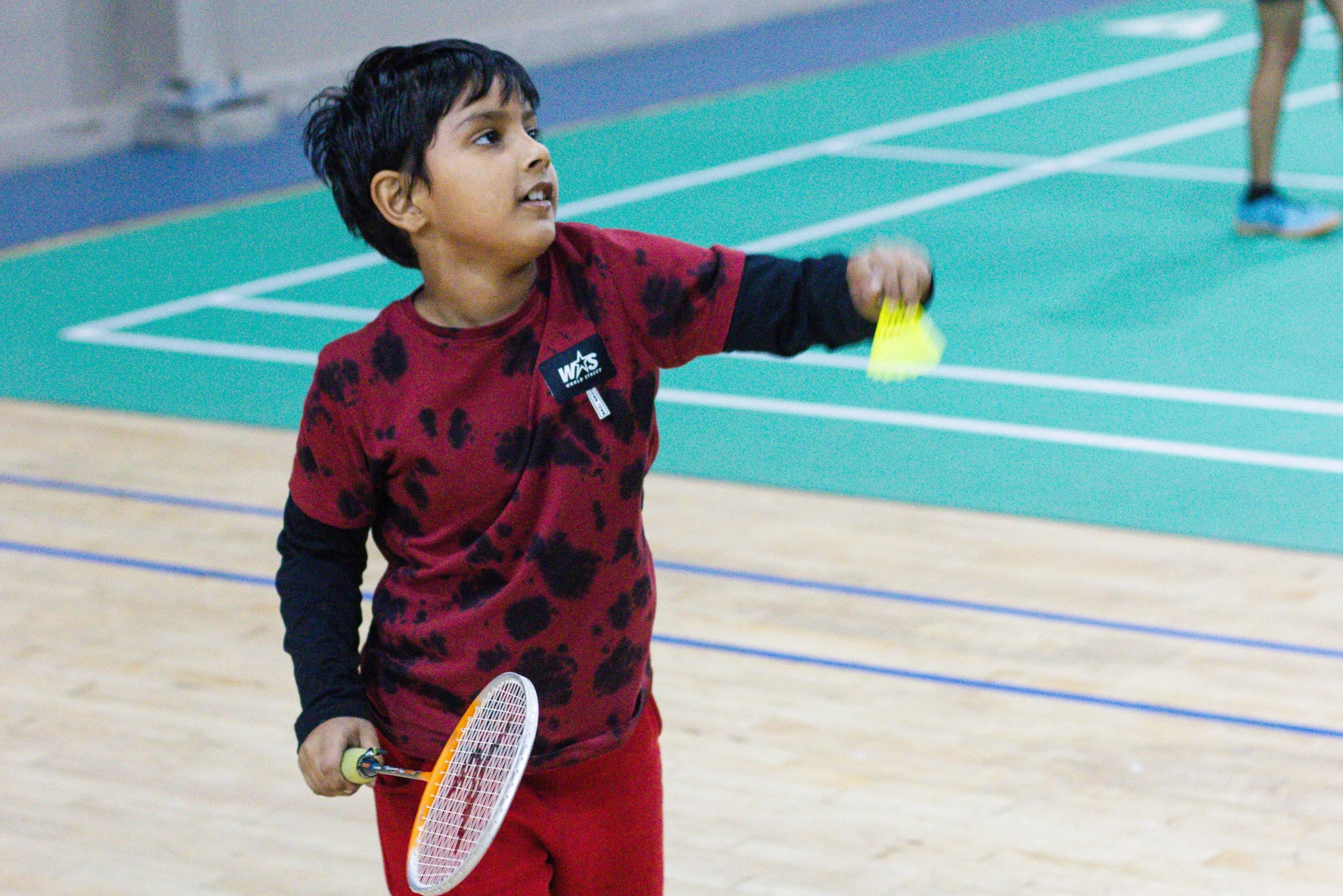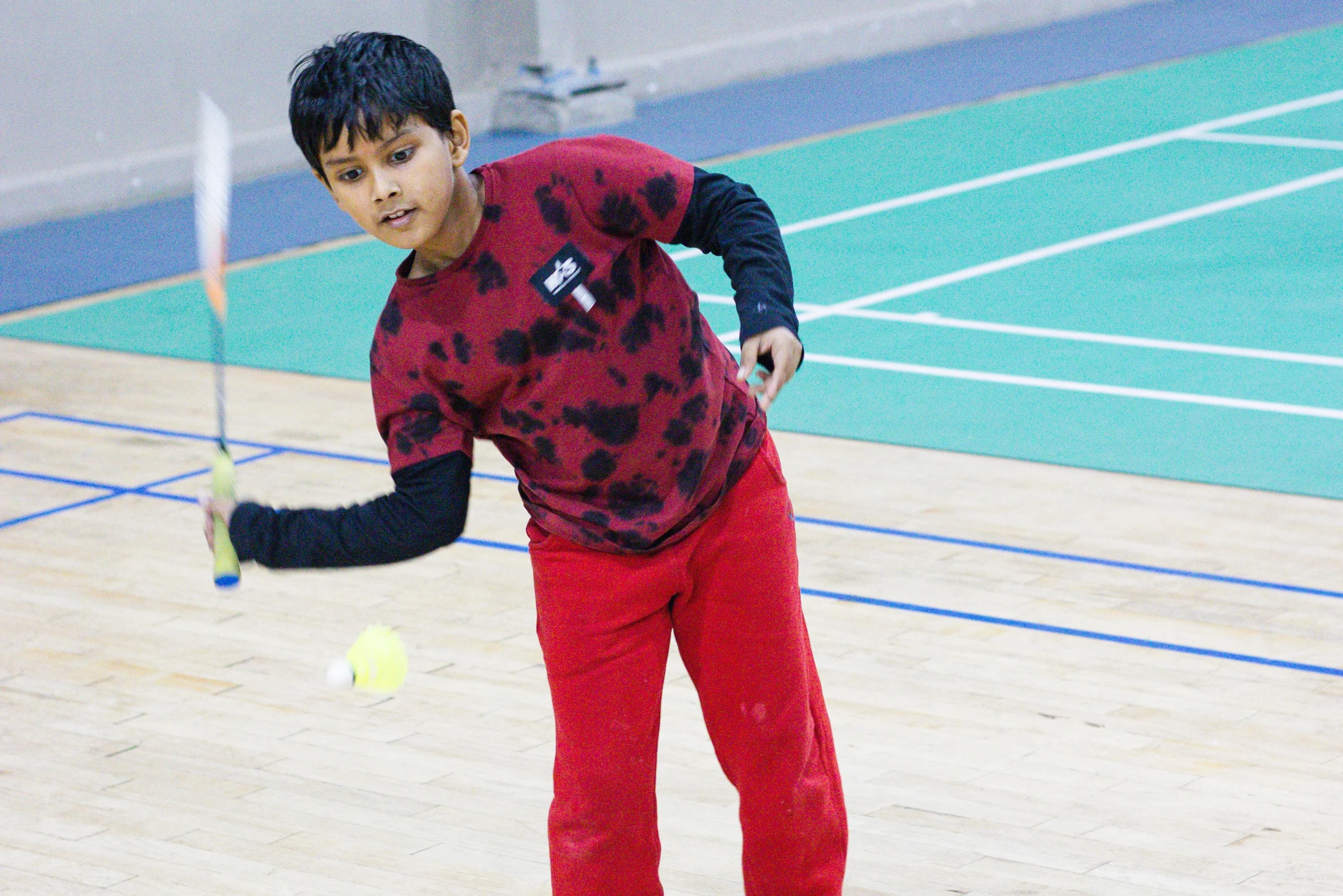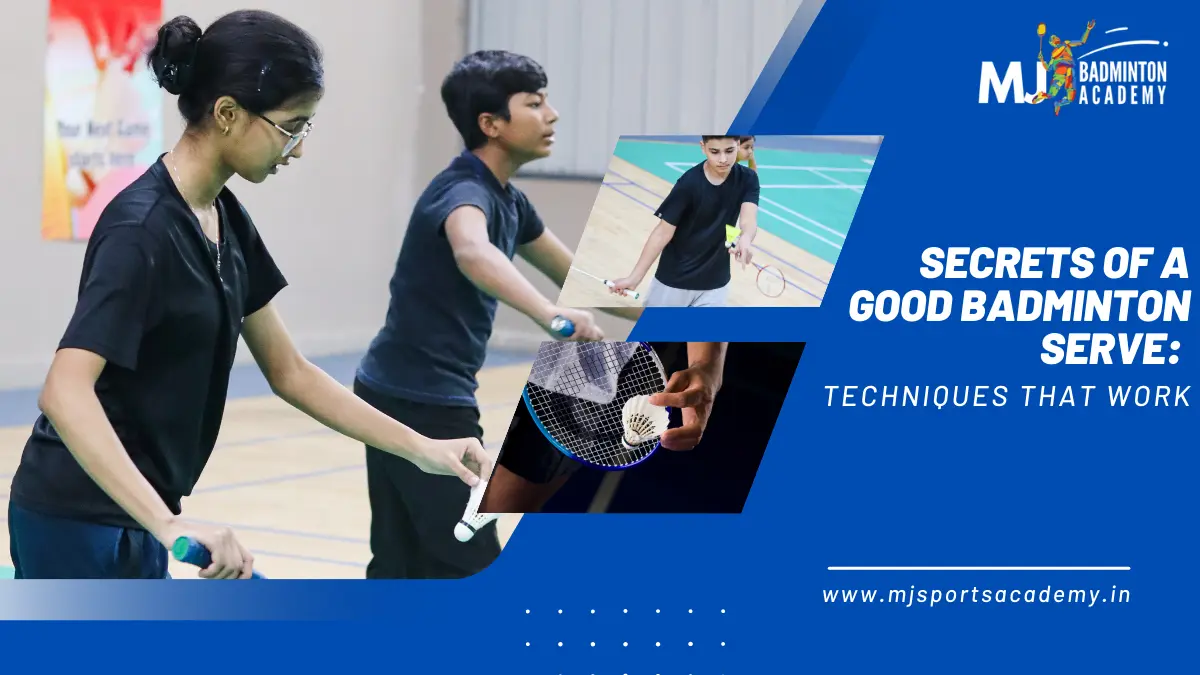An effective serve is not just a warm-up… it is the first opportunity to take control of the rally. Regardless of if you are a beginner learning the basics, or an advanced player practicing a strategy, the techniques of badminton can elevate your game beyond your expectations. At MJ Badminton Academy, we believe you can generate a sense of success with the serve, and in this article, we will show you the most best badminton techniques to develop this shot.
We will cover the types of serves (high, low, flick, and drive), the serve rules, serve grip and body position, some useful timing tips, and drills to help you practice. If you have ever asked the question, “What badminton techniques matter?”, this article is for you.
Table of Contents
Types of Serves in Badminton
One of the initial components of learning the skills and techniques of badminton is learning about the various forms of serve. Each serve can perform a tactical purpose based on whether you are using it in a singles or doubles match.


High Serve:
- Used In: Singles
- Technique: Hit the shuttle high and deep into the opponent’s backcourt.
- Purpose: To move your opponent to the back of the court and open up the front of the court for you to attack.
Low Serve:
- Used In: Doubles (singles sometimes)
- Technique: Gently flick the shuttle over the net and land it in the front part of the service court.
- Purpose: To prevent your opponent from attacking aggressively straight away.
Flick Serve:
- Used In: Doubles
- Technique: Start a low serve and then quickly flick your wrist to send the shuttle deep into the backcourt.
- Purpose: To surprise your opponent who expects a short serve.
Drive Serve:
- Used In: Advanced Doubles
- Technique: Hit the shuttle fast and flat and send it across the net.
- Purpose: To catch your opponent unaware and make them give a weak return.
Pro Tip: Mix up your serves. If you are predictable, your opponent gains an advantage in play. It is important to master the badminton techniques involved in the serve to help you stay competitive.
Serve Rules You Must Know
Adhering to the rules is very important, especially in tournaments. The Badminton World Federation (BWF) has some significant and relevant service rules:
- The shuttle must be below the waist – at the moment of contact.
- The shaft of the racket must be pointing downwards.
- You must not lift your feet off the ground or shuffle them about inside the service court until you have struck the shuttle.
- You must serve to the diagonally opposite service box
Missed rules can lead to a fault that involves losing points and meaning losing your momentum. MJ Badminton Academy prioritises rule-based play as it enhances fairness and facilitates real skill development.
Grip and Body Position: The Foundation of a Good Serve
One of the most underestimated simple techniques in badminton is the right grip and position of the body in the serve. When your serve doesn’t start correctly you won’t be able to hit a serve consistently with accuracy or power.
- The Grip:
- Forehand Grip: Used for high and drive serves and is as if we are shaking hands with our racquet, relaxing our grip but not too loose.
- Backhand grip: Used for low and flick serves. Here our thumb should rest on the flatter side of the handle.
- The Stance:
- Positioning: Side on with our non-racket foot slightly forward.
- Balance: Weight evenly distributed, with knees slightly bent.
- Focus: Eyes on the shuttle and are relaxed and fluid with the arm movement is essential.
If you don’t know how to correctly grip the racquet or maintain the correct body orientation with your arms then you are creating inconsistency in your serves that your opponent will exploit. Practicing the best badminton techniques regularly will provide you with consistent shot making even when the pressure is on.
When to Use Each Serve
One important facet of developing and honing your technique for badminton is knowing what serve to use and when. This largely depends on whether you’re playing singles or doubles, the position of your opponent, and your tactic for the game.
Singles:
- High Serve- The best type of serve for getting your opponent to the back of the court and making sure you have time for your next shot.
- Low Serve- Use this from time to time to mess up the players rhythm and change the pattern.
Doubles:
- Low Serve- The low serve will be your main serve. You want to use this serve to stop your opponent from getting an attacking chance.
- Flick Serve- Use the flick serve occasionally to deceive an aggressive player who is playing front-court.
- Drive Serve- Use the drive serve in doubles to apply pressure, but don’t use this or any serve unless you have full confidence in the placement, as it is a risky serve.
There is a difference between good players and great players with respect to serving, and the ability to serve strategically adds to the unpredictability of your game just like great players do. All great players can use all of the services available to them.
Practice Drills to Improve Your Serve
At MJ Badminton Academy we are big on deliberate practice. Here are some drills to assist with your badminton techniques based on serving.
Target Practice:
- What to do: Set up cones or markers in various spots in the service court.
- Goal: Hit your targets consistently when serving.
- Benefit: Accuracy and control.
Shadow Serving:
- What to do: Go through the serving motion without a shuttle or racquet.
- Goal: To create muscle memory and refine motion.
- Benefit: Helps with rhythm and flow.
Consistency Challenge:
- What to do: To perform 50 low serves consecutively without a fault.
- Goal: Reinforcing correct form under fatigue.
- Benefit: Develop mental and physical consistency.
Serve and Attack Drill:
- What to do: Serve, then move to the next expected shot (net or backcourt).
- Goal: Mimicking a game time scenario.
- Benefit: Get your body used to a rally situation.
Consistency, repetition, and technique-based drills are the way to unlock the best badminton techniques in your game.
FAQs – Best badminton techniques
What are the best badminton techniques for serving?
Mastering the best badminton serves depends on the proper grip, body position, and when to put into practice a high, low, flick, or drive serve. A well-executed serve can put your opponent in a difficult position as soon as you begin.
What are badminton techniques that beginners should focus on first?
Beginners can work on their badminton skills through the core techniques included in the sport. Keep working on your grip, stance, footwork, and especially consistent low serves and high serves. Without proper foundations within your badminton skills, it is likely you will find it more difficult to build advanced skills later on.
What are the types of serves in badminton and when should I use them?
There four types of serves:
1. High Serve: Used in singles to push the opponent to the back.
2. Low Serve: Used in doubles to limit attacking returns.
3. Flick Serve: Surprise serve to catch your opponent off guard.
4. Drive Serve: Used in advanced level doubles to put pressure on your opponent with speed and flatness.
The choice between serves depends on where your opponent is and whether or not it is singles or doubles.
Are there specific badminton techniques to avoid common service faults?
Yes. To avoid a fault in badminton, practice the following badminton skills:
1. Make contact with the shuttle below waist height.
2. Make sure the head is pointing down at the place you want to shuttle to from impact.
3. Make sure rake feet remain stationary until you hit the shuttle.
4. Hit the shuttle into the correct service court while serving diagonally.
Taking the time to practice these rules can help firmness and limit your faults.
How can I improve my badminton serve quickly?
Utilize focused-practice drills, e.g.:
1. Target serving for precision
2. Shadow serving for motion memory
3. Consistency challenges for repetition
4. Serve and attack for scenarios compared to real game
These are top badminton skills to improve quickly.
Conclusion: Serving Smart is Serving Strong
So, what are badminton techniques that can really change the game? It all boils down to getting your serve right. There is a ton to master, from understanding the types of serves, to disciplined practicing, and every factor matters.
From someone who is just starting out on the basic techniques in badminton to an intermediate player who wants to take their skills to the next level — your serve can truly change the game. If you blend this with tactical thinking, and lots of practice, then you will be able to change the course of your game.
At MJ Badminton Academy, we advocate intentional training. Come along and learn, not only what the game is and how to play, but learn how to play it the right way.



